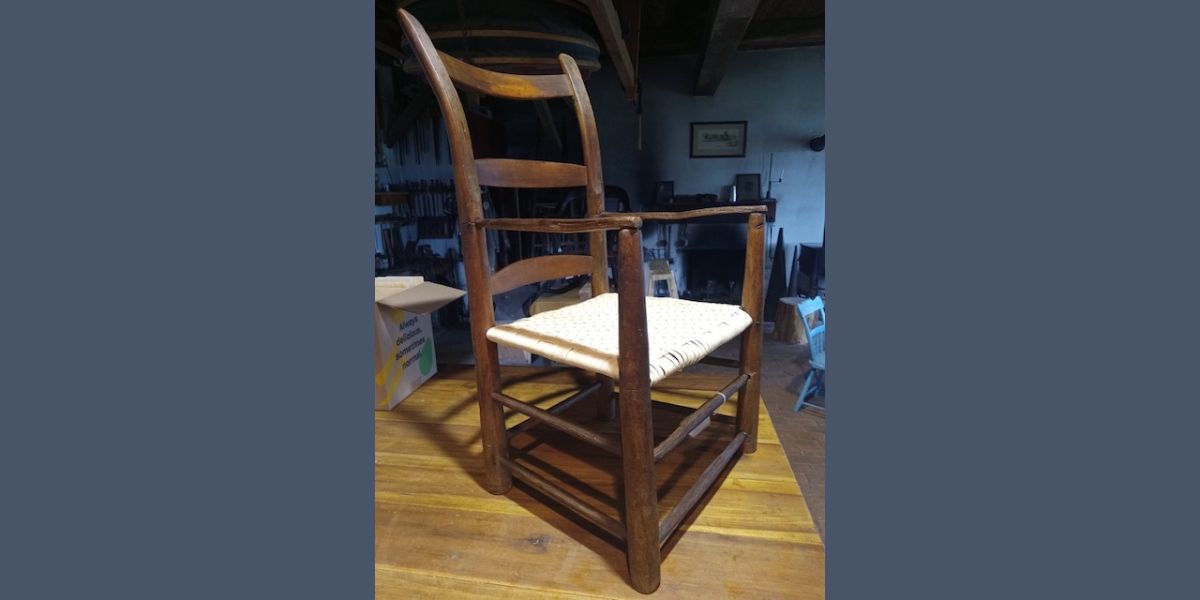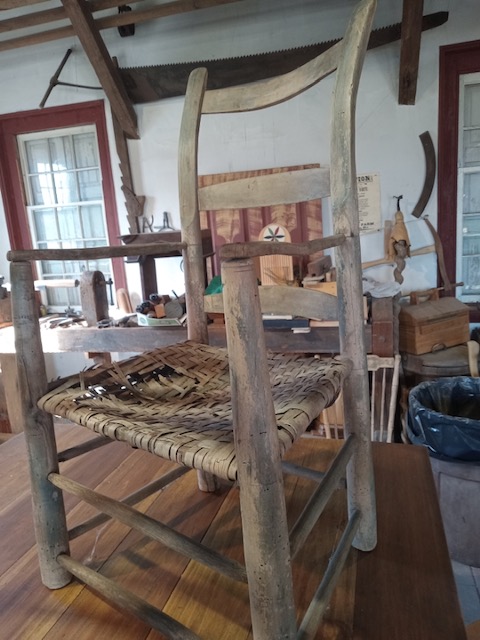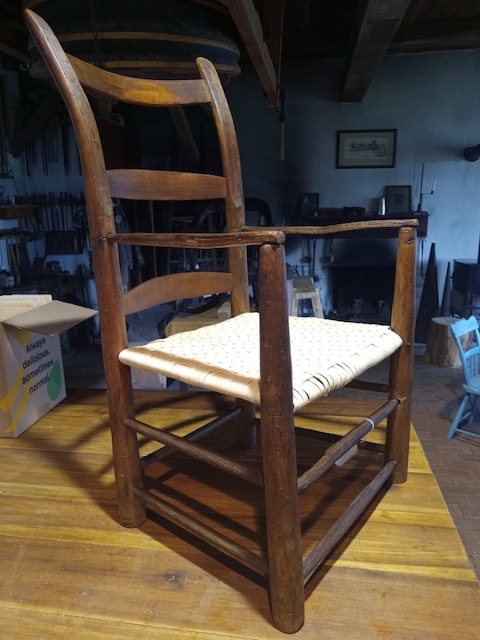
The Mule Ear Chair
 The Woody family started making handcrafted “mule-ear” chairs in Mitchell County, NC in the early 1800's. The chairs got that name because of the way the back posts stick up like the ears of a mule. Back in the day when most everything was handcrafted, most everything was bartered as well. Arthur Woody took his chairs on an ox-drawn cart to Marion and Forest City to exchange for things he could not produce at home, such as coffee and sugar. During the craft revival, a period when mountain crafts came to the attention of northern markets, Arthur Woody shipped chairs by Railway Express to cities like Boston.
The Woody family started making handcrafted “mule-ear” chairs in Mitchell County, NC in the early 1800's. The chairs got that name because of the way the back posts stick up like the ears of a mule. Back in the day when most everything was handcrafted, most everything was bartered as well. Arthur Woody took his chairs on an ox-drawn cart to Marion and Forest City to exchange for things he could not produce at home, such as coffee and sugar. During the craft revival, a period when mountain crafts came to the attention of northern markets, Arthur Woody shipped chairs by Railway Express to cities like Boston.
Later, grandson Arvel Woody and his brother Walter entered the chair making business after World War II. Arvel summed up chair making with, "We get the tree in the forest, and when we finish it up, it's in the living room". With his workers, they harvested trees from the forest, cut them on his own sawmill, and shaped them into heirloom chairs.
The Woody family uses local hardwoods. These are fashioned into chairs using the greenwood method, in which no metal fasteners or glue are used. Chair posts air dry, then are driven together tightly while the wood is still green (uncured). As the posts dry, they shrink around the stretchers, clamping them tight.

Woody's Chairs have found their way into national collections. Their work is part of the American Craft Collection of the Smithsonian. They have been featured in National Geographic. Arvel Woody was named a North Carolina Living Treasure in 1995. These chairs are know by several names such as a "country” chair, a "mule ear” chair, a "mountain” chair, a "post and rung" chair, and even a "rabbit ear" chair, depending upon the specific region of Appalachia. This chair has arms which makes it somewhat unusual. Evidently, these chairs are well known in the Appalachian regions of our country.
This chair came to us through a donation from a dealer. After the first examination, we addressed the issue of powder post beetles. After that, the chair was thoroughly cleaned and the wood was then given a period correct application of a combination of 50/50 boiled linseed oil and turpentine. The remains of the original seat were removed and the chair went to Lebanon County for a new "ash splint" seat. When it returned, it received more of the linseed oil/turpentine mixture. We hope that people get to see and enjoy this new "friend"


